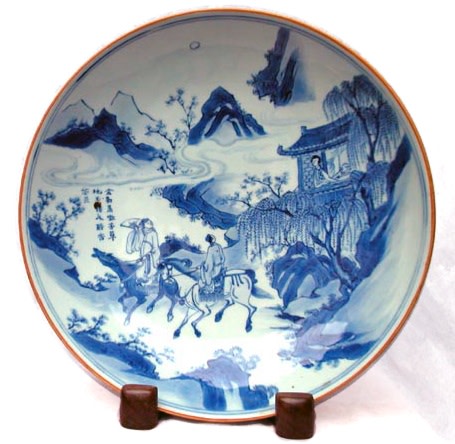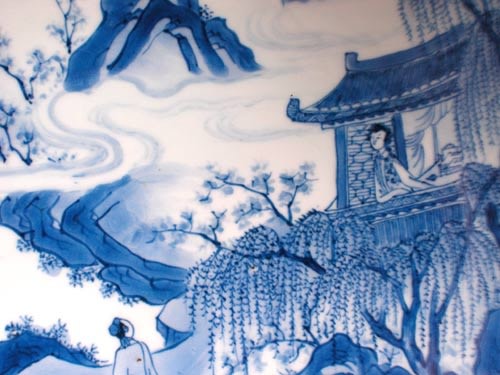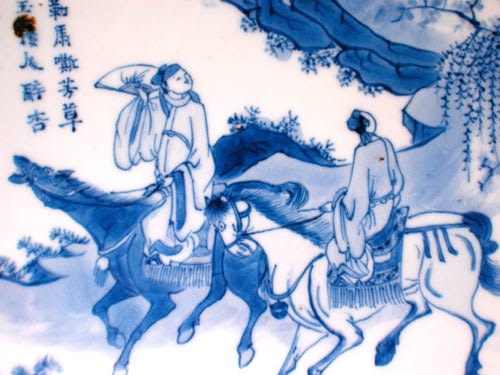Further images
Centrally painted with a lady gazing at the moon in a pavilion hidden behind a willow tree, below her two scholars on horseback admiring her beauty, the base with four character mark yutang jiaqi.
The mark, yutang jiaqi (fine vessels for the jade hall) is found on wares of the mid-17th century
Literature
The scene on the dish is closely related to the story told in a play entitled 'Pei Shaojun Making the Acquaintance of Xiao Li Over a Garden Wall' by the Yuan playwright Bai Pu (1226 - after 1306).
The scene represents the very moment when Pei Shaojun, the son of a Tang prime minister, caught sight of Xiao Li, the daughter of the Governor of Luoyang, where he was heading to purchase flowers. They fell in love at first sight and, with the help of her nanny, Xiao Li eloped with Pei Shaojun to live in the back garden of the Pei Residence. She stayed there for seven years and raised two children before she was accidentally discovered by her father-in-law, whereupon she was expelled from the house. The story ends happily when Pei Shaojun passed the imperial examinations with flying colours, became the magistrate of Luoyang, and formally married Xiao Li. Though less known than Xi Xiang Ji (Romance of the Western Chamber), this play is one of the four great love stories in the Yuan dramatic repertoire.
The poem on the dish translates as:-
Horses with the gold bridle neigh on fresh grassland;
guests are drunk in the jade pavilion at apricot blossom time.
The poem has been found quoted in short stories of the Song and Ming Dynasties but is not related to the painted scene.
The mark yutang jiaqi (fine vessels for the Jade Hall) is found on the wares of the mid-17th century.
For examples of similar dishes refer to Julia Curtis, Chinese Porcelains of the 17th Century, 1995 no.48; and Sir Michael Butler, OCS Translations, 1983-84, page 60, fig. 41.
.






